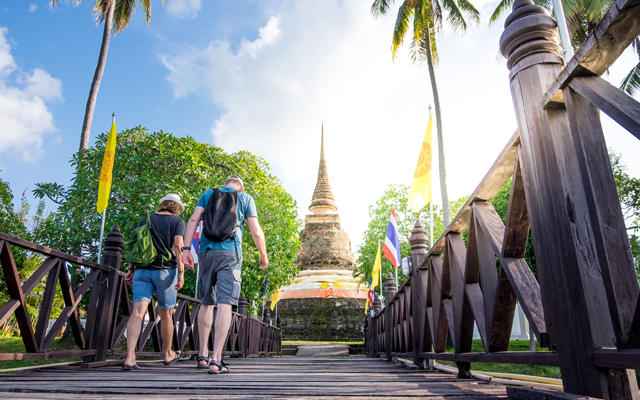Thailand’s tourism history makes a dramatic tale of ups and downs. It is strong, having benefited from growth over the past five decades, but also often challenged by devastating forces, such as the Tom Yum Koong financial crisis in 1997 and a series of political unrest that led to airport closures in 2008.
Yet, Thailand is so loved that tourism is able to rebound quickly when problems ebb.

Throughout Thailand’s many tourism crises, authorities would speak of reshaping the industry for resilience against future calamities, and to ensure that everyone can truly benefit from tourism gains when business is back on the rise.
However, all that talk is being tested now by the Covid-19 pandemic. People in tourism businesses are suffering, and the pandemic is not showing an end soon, especially with new variants continually surfacing.
We know that travel will henceforth change forever. Holidaymakers, being more concerned about health and safety during their journey, are altering their travel patterns and frequency of trips.
In respond to such expected changes, Thai authorities are looking to write a new chapter for the country’s tourism industry. They want to restructure an entire industry for a more tenably stay on the global tourism map.
The Ministry of Tourism and Sports and the Tourism Authority of Thailand (TAT) have just announced new directions in a six-year national development plan (2021-2026). It is set to reverse a prolonged focus on ‘more for less’ to ‘less for more’, an approach that is expected to be more beneficial for the people, from tour operators to local residents, as well as the environment.
This approach will turn away from volume, favouring instead the creation of high value tourism products and services with their own identities.
To arrive at this goal, Thailand has to build skills and capabilities in stakeholders, instil adaptability and promote creativity. Tourist safety must become topmost priority. Attention to tourism attraction management in consideration of environmental protection must also materialise.
We should expect that advanced technology would be leveraged to improve destination marketing efforts and strengthen competitiveness among Thai tourism businesses.
Tourism experts have expressed that a move to quality tourism can prevent other ills, such as tourist scams and unfair competition, as well as limit the impact on businesses should another crisis hit.
TAT governor Yuthasak Supasorn has sought to reassure industry stakeholders by pledging that Thailand would be one of the top tourism destinations post-pandemic.
Thailand welcomed almost 40 million tourists in 2019 before the pandemic, and tourism contributed 17 per cent of nation’s gross domestic product. International visitor arrivals accounted for 65 per cent of the total tourism revenue.
Since the launch of the Phuket Sandbox in July and until September 13, Thailand has been able to welcome more than 36,000 visitors to the resort island. Earlier this month, at least 462,900 room nights have been booked in advance for 3Q2021, and 24,947 room nights for October 2021 to February 2022.
While the figures today are no where close to Phuket’s pre-pandemic heyday, this is a good start to Thailand’s tourism reopening and a good opportunity for Thailand to walk her talk on tourism transformation.
Suchat Sritama is correspondent, Thailand for TTG Asia Media. He reports for the company’s stable of travel trade titles, including TTG Asia and TTGmice.




















